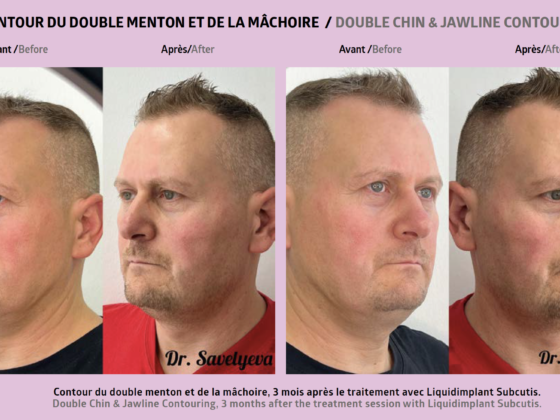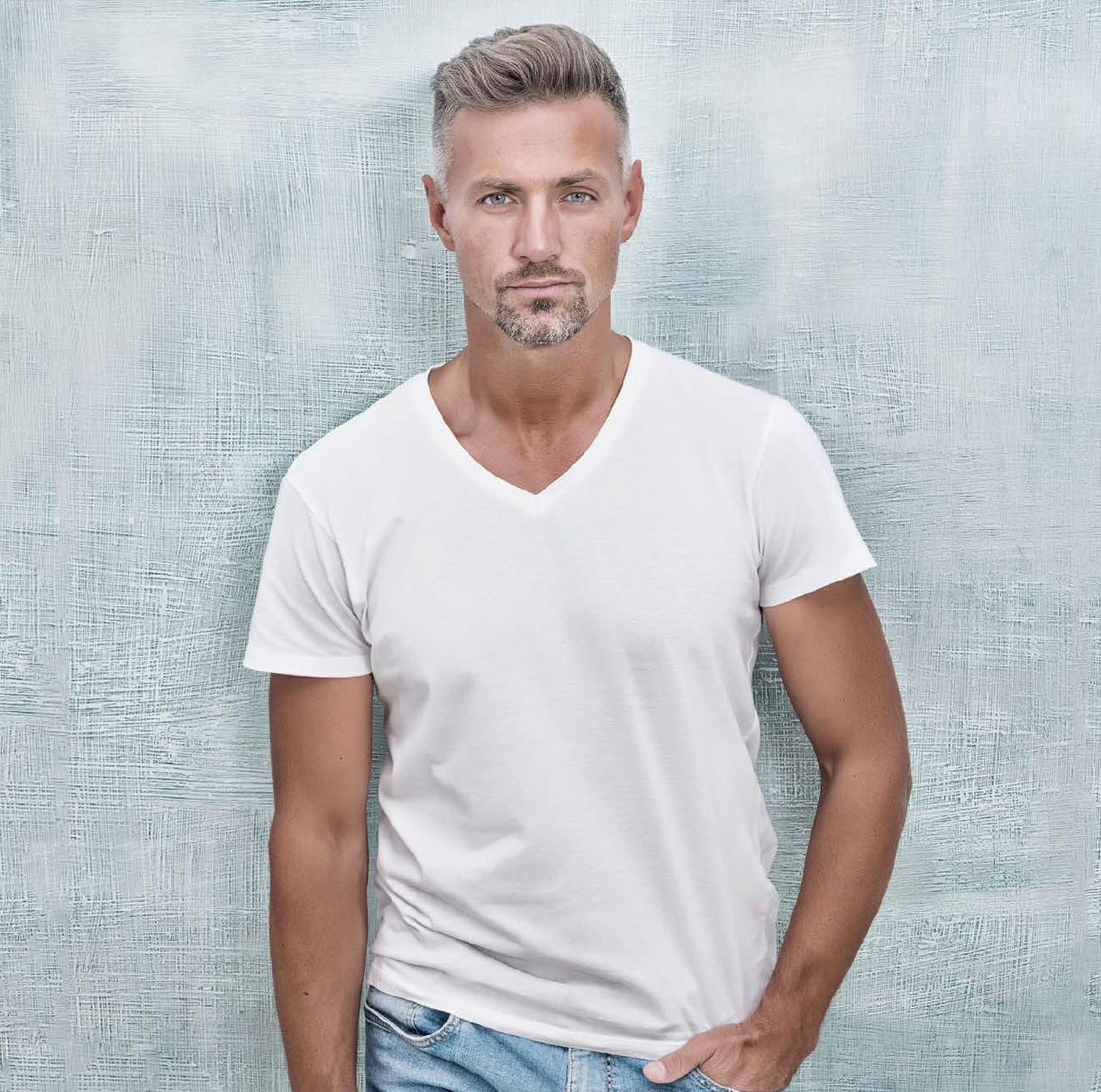Dr Franck Ouakil
No medical treatments are offered to treat the benign yet crippling problem of gynaecomastia, and surgery has long been the only therapeutic response. Now that cryolipolysis has been around for several years, aesthetic medicine has clearly proven that it can tackle this aw in men and has enabled a new approach to be developed, which I am highlighting here.
 What is gynaecomastia?
What is gynaecomastia?
Gynaecomastia is an excessively-developed mammary gland in men. It can aff ect one or both sides, in a symmetrical way or not. When the excess volume in the chest is connected with isolated fat accumulation, we talk about adipomastia (or pseudo-gynaecomastia). This phenomenon appears gradually and is frequently observed during a man’s life, especially in adolescence (40% of boys have mild gynaecomastia during puberty) and after age 50, when the chest become heavier and has a relatively signifi cant fatty component.
Therapeutic standpoint: which techniques to use?
Gynaecomastia is sometimes physiological and often resolves itself in the years that follow its appearance. We should therefore avoid stepping in to treat the problem during adolescence. After this time, if this excess volume in the chest remains, and depending on how much the person suffers with it, we might then envisage treatment.
Until now, the only option was surgery: removing the gland with an incision around the areola, called a “subtotal subcutaneous mastectomy”. Some extreme cases even required a skin lift – which leaves a long, horizontal scar that is very visible – to absorb the excess skin. Liposuction, which could have been a useful technique for extracting the excess fat (present in adipomastia) without leaving a scar, gives disappointing results as the adipocytes are often trapped in a dense network of glands which makes the suction ineff icient.
Back in 2014, when I first started using cryolipolysis, I thought about using this revolutionary method for reducing fat with cold for the male chest area. In most cases, it can reduce the fat mass by 30%, which is an average of 50% over two sessions.
Selecting the right cases
Patients who potentially have a more general medical issue will, of course, receive a proper diagnosis and will be referred to an endocrinologist. In the early days, I would treat cases of adipomastia or adipo-gynaecomastia that had previously been examined with an ultrasound scan by a radiologist to evaluate the presence and proportion of fat. Then I gradually started treating younger cases with more or less standard gynaecomastia with a clear glandular component, explaining every time that it would reduce the existing fat without the need for an operation or constrictions. I managed to build a loyal following of patients thanks to this protocol, which has gradually become routine.
What happens during a session?
After analysing and explaining the results we can realistically expect, according to the case, the session is carried out as follows:
1. Measurements are taken using the machine’s integrated ultrasound scanner.
2. Photos are taken in several positions.
3. The patient is settled comfortably on their back, their arms alongside their body, positioned slightly away from it.
4. A professional-quality, medical-standard towelette is placed on the chest. The exclusive use of this consumable is one of the fundamental elements that makes this treatment so safe. Its surface area is slightly larger than the treatment zone, for complete coverage, even after suction.
5. I personally take care of all of the settings on the Cristal Pro® machine from Deleo, which I have used since 2014 (I have used the Pro version since 2019):
- a. Choice of applicators: Emerald or, more rarely, Sapphire on either side.
- b. Suction power around 300mBar.
- c. Temperature -10°c.
- d. Duration 60 minutes.
6. The treatment is rounded off with a fi rm 10-minute massage which allows the tissues to return to their normal temperature. I plan for one to three sessions, according to my assessment of the results, with photographs taken by me, in my office, one month after every session. The first results start to appear after four weeks, and this is when we determine whether to continue or finish the treatment, with the definitive results being achieved after three months.
It is a safe and reliable method, where the counterindications (blood circulation issues and chronic skin pathologies) and side effects (burns, which I’ve never had; paradoxical hypertonia, which is very rare, and I have never had any cases of this on the chest) are rare and can be resolved with surgery, if necessary.
Cryolipolysis allows for a real and clear reduction in volume, which is often spectacular when there is excess volume in the chest of a man. It has a great many advantages compared with traditional surgery, to the point that, in my practice, it has become my go-to method for treating gynaecomastia. Though I originally only used it for pure adipomastia in older adults, I now use it for all cases and at all ages. I know there will always be an improvement, to a varying degree, and without constraints or scars. What is more, I often treat cases using cryolipolysis that I would never have treated with surgery. Direct exeresis surgery is now only used for pure gynaecomastia with a large glandular component in young subjects who want a radical treatment or who have had unsatisfactory results with cryolipolysis. This is one instance where aesthetic medicine trumps cosmetic surgery.
 Dr Franck Ouakil
Dr Franck Ouakil
Plastic and cosmetic surgeon. European higher diploma in plastic, reconstructive and aesthetic surgery in 1990. Self-employed since 1996. Former house doctor and clinic head in the Paris Hospitals. Former associate doctor at Saint-Louis hospital. Post-graduate under Prof. Pitanguy in Brazil. Polyvalent activity including surgery and aesthetic medicine. Specialises in rhinoplasty and has trained doctors in injection techniques (toxin, hyaluronic acid, collagen inducers) for several laboratories for many years. Has used cryolipolysis since 2014.
More informations: docteurouakil.com










